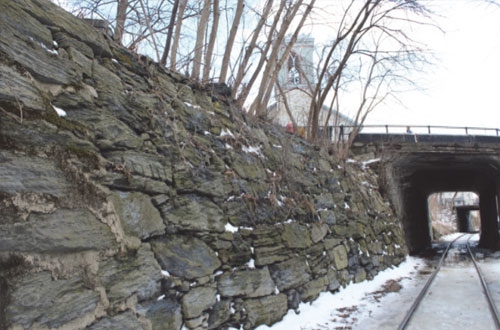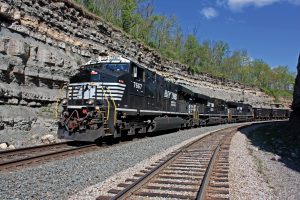Vermont rail tunnel project delayed for environmental analysis
Written by Mischa Wanek-Libman, editor
A plan to replace two road bridges and build a rail tunnel in Middlebury, Vt., is being delayed in order for the project's environmental impact to be studied.
The Vermont Agency of Transportation (VTrans) has been working with the Town of Middlebury and stakeholder groups in recent months to advance the project that replaces two aging highway bridges that cross the rail line known as the Western Corridor. VTrans says that due to objections raised recently, the Federal Highway Administration (FHWA) and VTrans work will likely not begin in 2017, which will allow time for a more detailed examination of project risks under the National Environmental Policy Act (NEPA).
A 360-foot tunnel would replace two bridges at Main Street and Merchants Row in downtown Middlebury. The tunnel would improve track alignment and improve clearance issues for the railroad. Currently, the bridges do not have enough vertical clearance for double-stack rail cars. By lowering the rail bed approximately four feet, clearance can be increased to 21 feet without impacting the grade of the road and sidewalks above.
The tunnel will also enable the alignment of the rail to change, softening the curve that currently exists, allowing better horizontal clearance for trains. Drainage improvements and covering the track will reduce the risk of icing problems that have been severe in some winters, as well as ponding that occurs.
“It is unfortunate that the collective efforts of so many can be sidelined by the threat of legal action,” said Vermont Transportation Secretary Chris Cole. “But rather than carry that risk into construction and potentially cost the taxpayers additional funds, VTrans and FHWA have elected to engage in an additional administrative process.”
FHWA and VTrans will conduct an Environmental Assessment (EA) to more thoroughly examine whether the project presents significant environmental impacts. The EA will cover all components of this project. A finding of no significant impact, will allow the project to proceed with the current alternative to replace the aging bridges with a tunnel. A comprehensive alternatives analysis in the form of an Environmental Impact Statement will need to be performed if the EA identifies significant impacts.
“The decision to perform an EA reflects the need to manage environmental and legal risks,” said Middlebury Selectboard Chair Brian Carpenter. “While we all understand the need for replacing our downtown bridges and improving the safety of the rail line, I think the decision to undertake an EA is right for Middlebury.”
FHWA and VTrans have previously documented a categorical exclusion (CE) for this project and have decided to conduct an EA rather than reevaluate the CE in view of project’s small but vocal opposition. Under NEPA, a CE applies to actions that do not individually or cumulatively have a significant effect on the environment.





